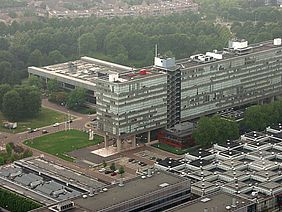A large part of global CO2 emissions is caused by energy production in power plants, as well as processes in heat-intensive industries. Fossil fuels are a convenient, and for the most part, readily-available source of energy for these kinds of applications; however, energy production from fossil fuels will not be able to satisfy our increasing energy demands in the long run. Renewable energy generated by the sun or wind, on the other hand, is not suitable for every kind of application, for example in heat-intensive industries, because the timing of generation or the form of energy may not be able to accommodate their energy demand. So far, there have been few CO2-free and sustainable alternatives for these sectors. Metal fuels, as a recyclable source of clean energy, are promising alternatives to fossil fuels in a future low-carbon economy.
Now (2020), scientists of the TU/e’s student team SOLID at Eindhoven University of Technology, together with the Metal Power consortium, have installed the world’s first cyclical iron fuel system at Swinkels Family Brewers’ brewery, Bavaria, thus demonstrating that iron fuel can be used as a renewable energy source in heat-intensive industries, which would normally employ industrial processes powered by fossil fuels.
The cycle of the iron fuel system designed by the scientists includes the several steps: finely ground, cheap iron powder is burnt at high temperatures, releasing energy during oxidation in a process that emits no carbon and produces iron oxide as emission. The rust can then be converted straight back into iron powder with the help of electricity. If you use solar, wind or other zero-carbon power systems for this, you achieve a wholly carbon-free cycle. In this combustion process, the iron acts as a kind of clean battery which can charge up using different methods including electrolysis and discharge in flames and heat.
The successful implementation of the system is the result of earlier research carried out by students who were part of the TU/e’s student team SOLID at Eindhoven University of Technology in 2018. The group of scientists wanted to prove that iron powder could be burnt effectively to power industrial processes and built a proof-of-concept installation that generated both heat and electricity. They also demonstrated that the process could be integrated into the already existing processes of iron production and rust recycling. The system had a capacity of 20 kilowatts, which is comparable to that of a conventional central heating boiler.
Three years earlier, in 2015, a team of scientists at McGill University, Canada, studied the combustion characteristics of metal powders to determine whether such powders could provide a cleaner and more economical alternative to fossil fuels than hydrogen, biofuels, or electric batteries.They found that metals, when ground into a very fine powder, could be made to burn under the right conditions.They also discovered that it was very important to get the powders to burn in an even flame. The team designed a possible burner design that worked by blowing air through a stream of metal powder which combined and were injected into a combustion chamber. A cyclonic chamber separated the resulting metal ash off afterwards and clean nitrogen gas formed the exhaust. The heat was used to run the engine.
There are several advantages to using iron powder as fuel, one of the most important being that it can release the energy stored in iron fuel as needed. If iron is ground into a fine powder it becomes highly flammable. Its combustion releases a lot of energy in the form of heat. Moreover, iron fuel is reusable and easy to transport. Also, no CO2 is produced during combustion and only rust remains, which can then be sustainably converted back into iron powder. Furthermore, iron fuel is safe and loses virtually no energy during storage so that you can store it for longer periods of time and transport it over greater distances. Iron powder is cheap and abundant, it has a high burning temperature of up to 1,800°C, and unlike hydrogen, for example, it does not need to be cryogenically cooled. Using iron powder in existing power generation infrastructure would simply require retro-fitting to deal with a different combustion process. Iron powder combustion could provide a clean, yet load-responsive power grid that uses easily-stored raw material produced either by clean, renewable energy, or other industrial manufacturing operations.
A follow-up project which aims to realize a 1 MW system has already been launched, which will also serve as an opportunity to refine the current iron fuel cycle. The scientists are also making plans for a 10 MW system that should be ready in 2024.Their final goal is to convert the first coal-fired power plants into sustainable iron fuel plants by 2030.
